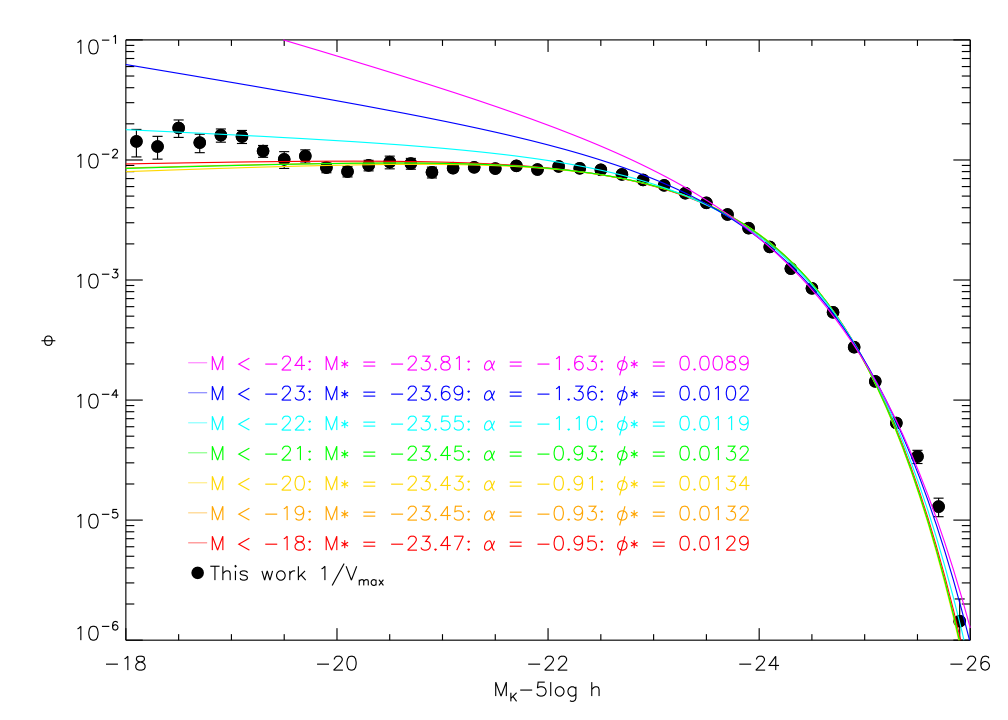This is some work in progress: K-band luminosity function from the UKIDSS Large Area Survey (LAS, black dots), showing the number of galaxies per unit volume depending on the luminosity of the galaxies, from faint (left) to bright (right). I.e., there are lots more small galaxies than big galaxies.
I've fit several Schechter functions to the data. This is a convenient way of describing the luminosity function in terms of three numbers: the slope of the faint end (alpha), the luminosity brighter than which the number of galaxies drops off rapidly (M-star) and the number of galaxies per unit volume at M-star (phi-star). To fit the Schechter functions I've used only a portion of the data, as shown in the figure. For example, for the green curve, I've used only the black points brighter than (to the right of) absolute magnitude -21.
Now here's the point. At high redshift, it is possible to see only the brightest galaxies. So we would be able to plot only the black points towards the right-hand side of the figure. But what effect would this have on the Schechter function? Even if we assume the luminosity function does not vary with redshift, our Schechter function fits would! In fact, if we relied on the Schechter function fit to tell us how the galaxy population varied with redshift (a silly thing to do, but people do it all the time), we would infer that the high-redshift galaxy population was (1) brighter (2) more dominated by small galaxies and (3) less abundant than the low-redshift galaxy population.
(Now (1) and (3) are probably true, but we don't need the Schechter function to tell us. Not so sure about (2).)
Moral: don't rely on the Schechter function!
(Update: see section 6.1 of my luminosity function paper here.)
